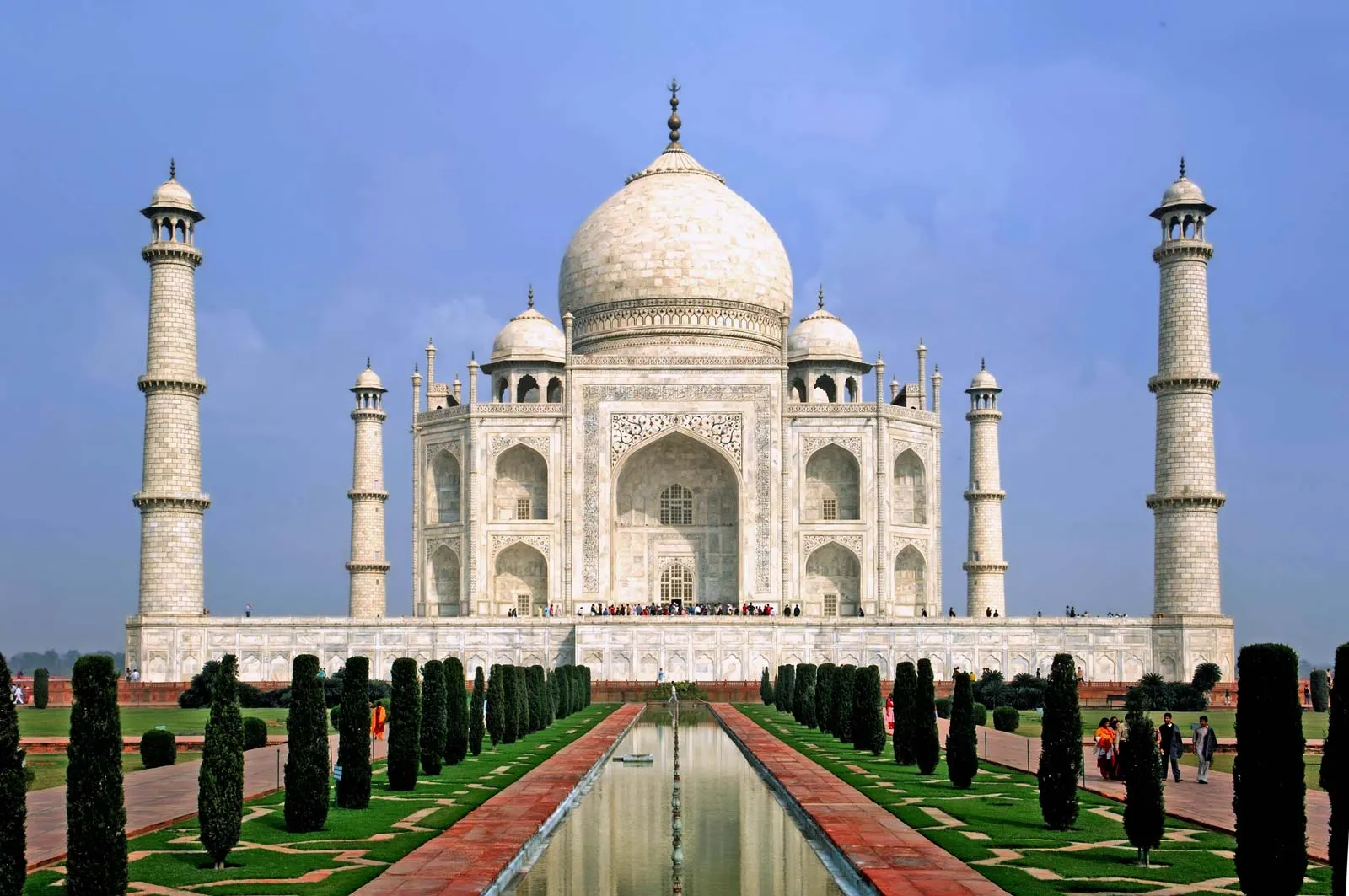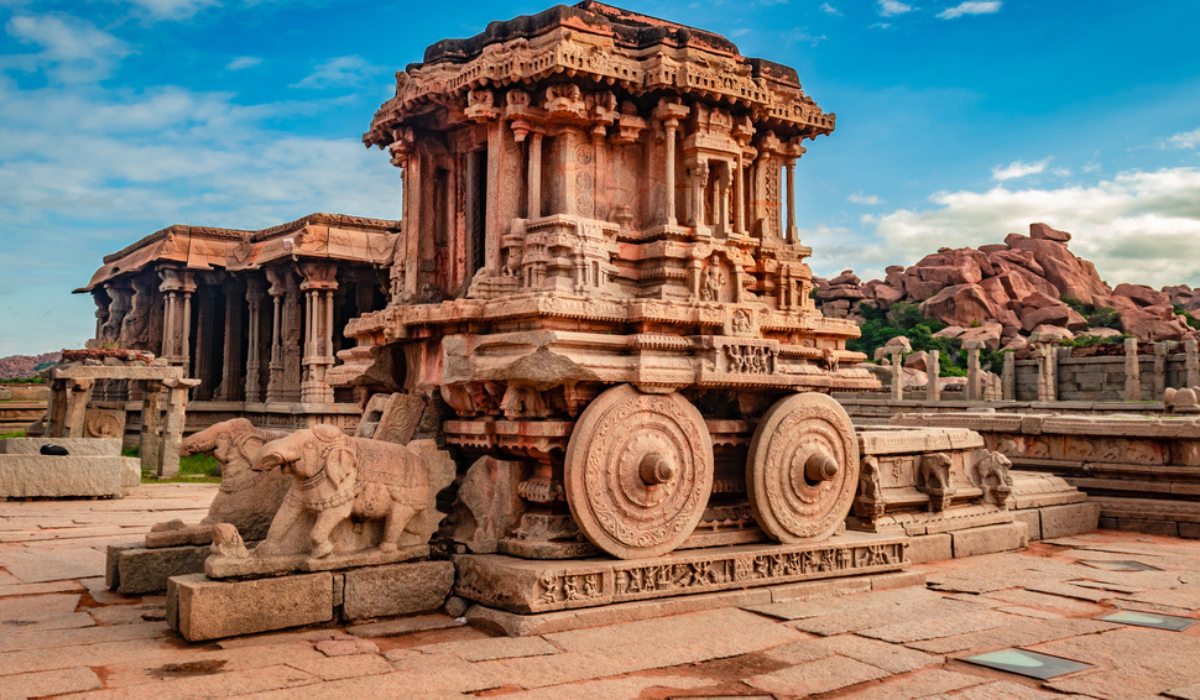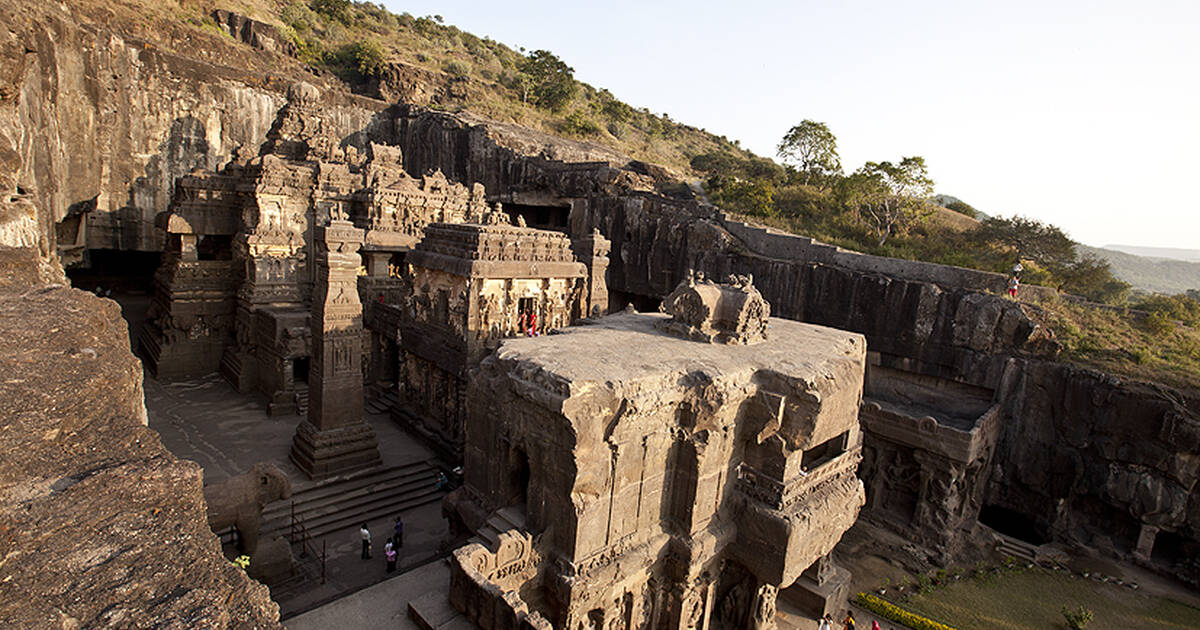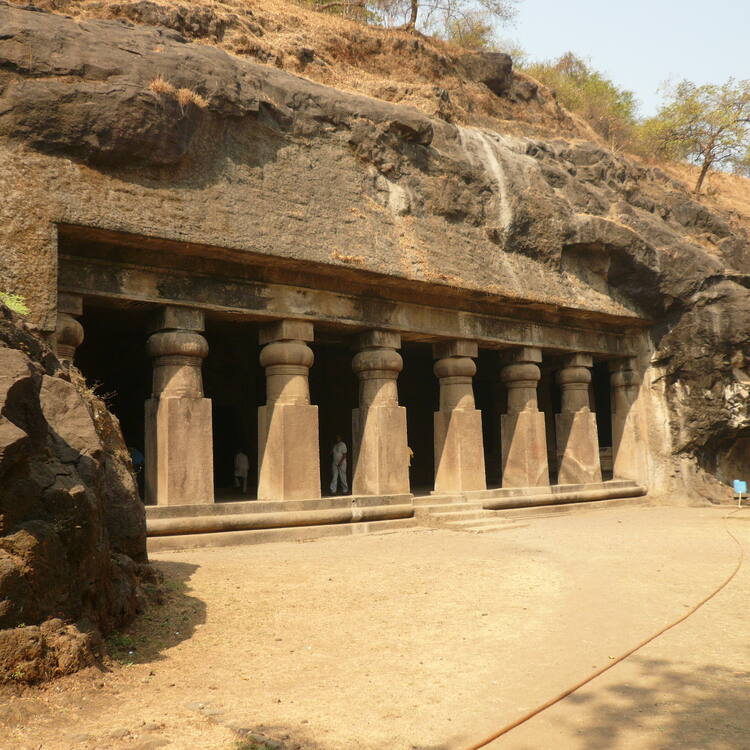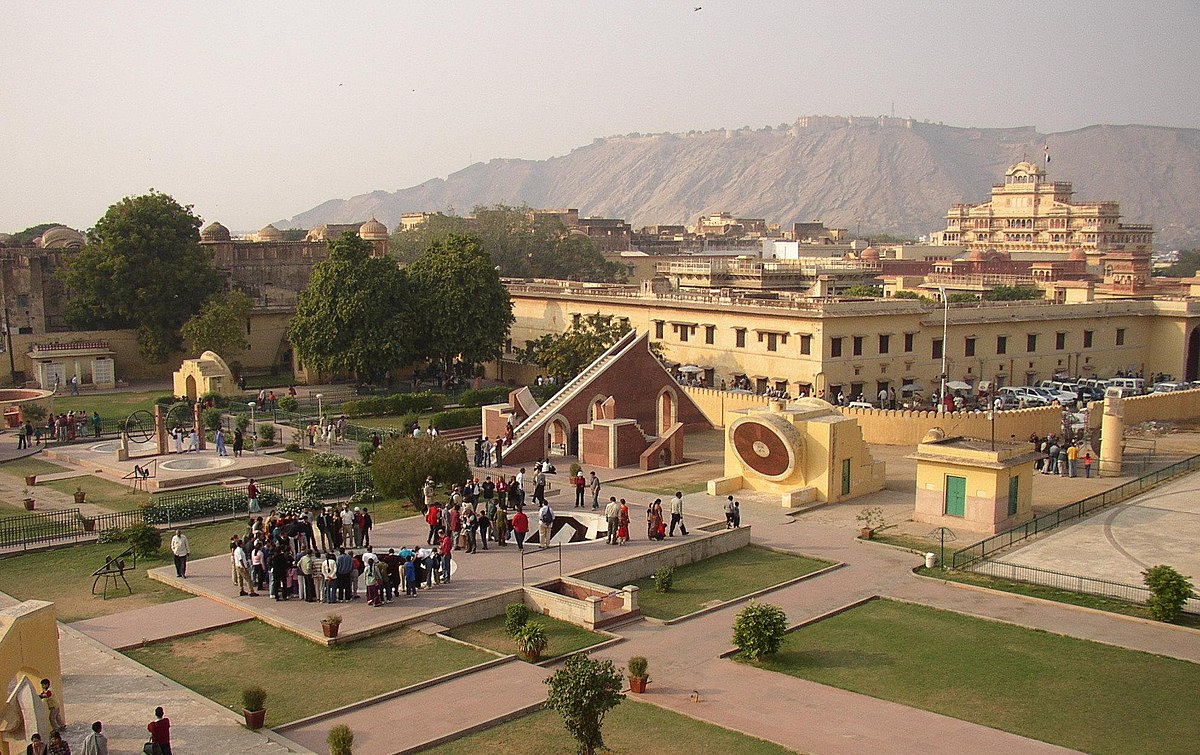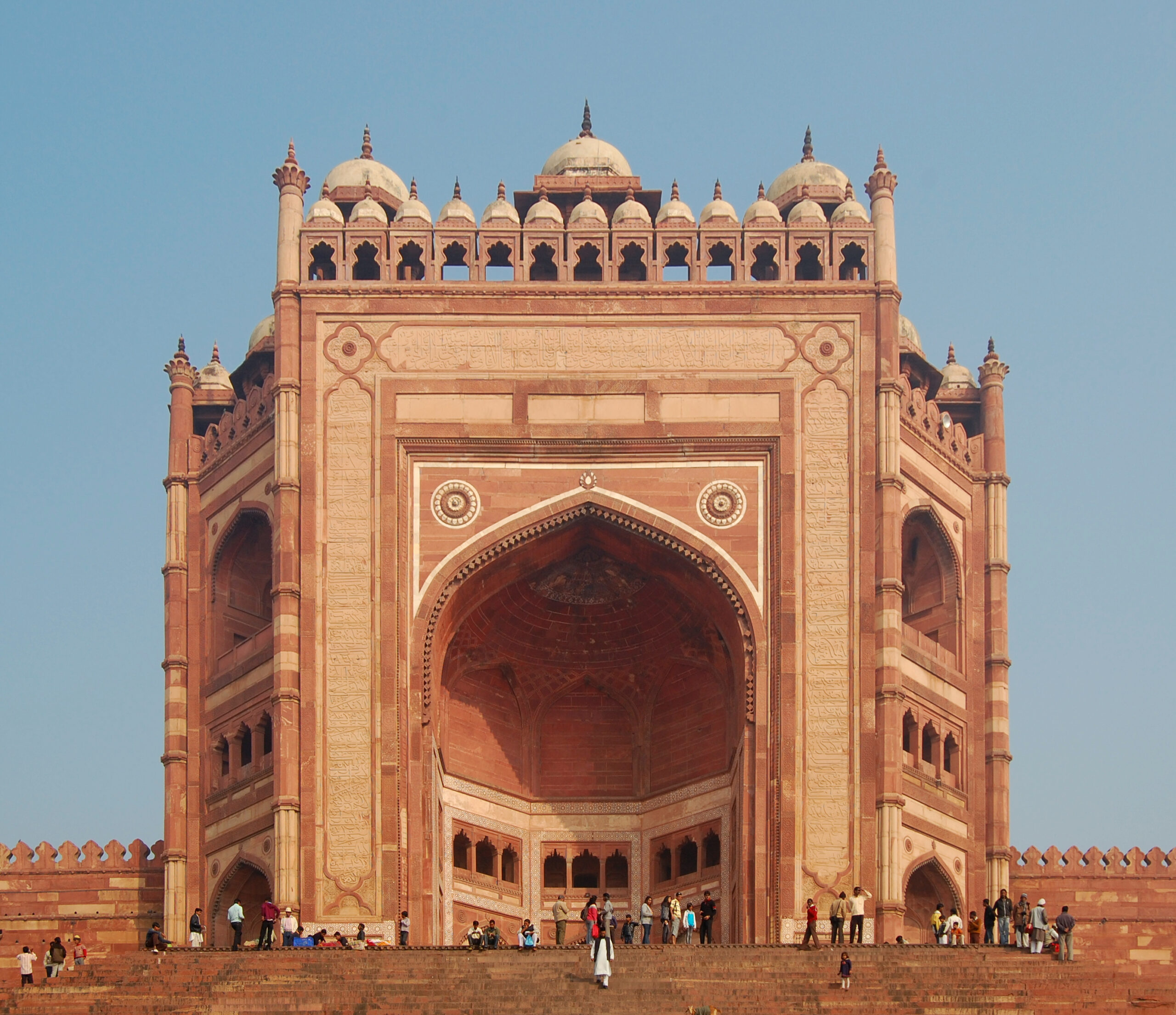India is a land of ancient civilizations, diverse cultures, and stunning landscapes. The country is home to numerous World Heritage Sites recognized by UNESCO for their outstanding cultural or natural importance. In this blog, we will take a look at the top seven most magnificent World Heritage Sites in India.
So,
Taj Mahal, Agra
Taj Mahal is an ivory-white marble mausoleum located in Agra, Uttar Pradesh. The Mughal emperor Shah Jahan built it in honour of his beloved wife Mumtaz Mahal, who passed away in 1631 while giving birth to their 14th child. The construction was started in 1632 and finished in 1653.
One of the best examples of Mughal architecture, a synthesis of Arabic, Persian, and Indian styles, is the Taj Mahal. It is well known for its elaborate marble carvings, calligraphy, and inlay work that uses precious stones like lapis lazuli, jasper, and jade. A striking visual effect is produced by the structure’s reflection in the pond water surrounding it.
Each year, millions of tourists from all over the world visit the Taj Mahal, which is listed as a UNESCO World Heritage Site. It is recognised as one of the best World Heritage sites in India, also exquisite and romantic structures in the world as well as a representation of Indian culture, beauty, and love.
So,
Hampi, Karnataka
Hampi, a historical city in the Indian state of Karnataka, is well-known for its magnificent ruins. It includes several temples, palaces, and other buildings that are dispersed over a wide region of steep hills and valleys. It used to be the capital of the Vijayanagara Empire. Two brothers who formed the Vijayanagara Empire, Harihara and Bukka, constructed the city of Hampi in the fourteenth century. With a population of more than 500,000, the city, throughout the years, expanded to become one of India’s biggest and wealthiest cities.
Hampi has officially been designated a UNESCO World Heritage Site in honour of its exceptional cultural significance. Hampi is a must-visit destination for anyone who is interested in history, culture, and architecture. The city’s natural beauty makes it one of the most unique and fascinating places to visit in India.
So,
Ajanta Caves, Maharashtra
In Maharashtra, there is a group of old Buddhist rock-cut caverns known as the Ajanta Caves. The caves were built between the second century BCE and the sixth century CE and were carved into a horseshoe-shaped rock near the Waghora River. The Ajanta Caves’ paintings represent scenes from ancient India’s daily life as well as several episodes from Buddha’s life. The paintings are renowned for their exquisite details, use of colour, and shading. These are regarded as some of the most outstanding surviving works of ancient Indian art.
The Ajanta Caves were designated a UNESCO World Heritage Site in 1983. It is visited by thousands of tourists each year. The location is regarded as a significant cultural and historical monument and serves as a reminder of India’s old art and architecture.
So,
Ellora Caves, Maharashtra
Ellora Caves is located nearby Ajanta Caves in Maharashtra. The Ellora Caves are a group of temples and monasteries carved out of solid rock and dating from the period 600–1000 CE. It is the largest rock-cut Hindu temple cave in the world. The sculptures represent scenes from Hinduism, Buddhism, and Jainism, and are famous for their precise detail. The Ellora Caves are particularly impressive because they represent the development of Indian art and architecture over several centuries. It is a part of the UNESCO World Heritage Sites and also one of World Heritage sites in India.
SO,
Elephanta Caves, Maharashtra
The Elephanta Caves are ancient rock-cut caves located in Western India on Elephanta Island. Firstly, these rock-cut Caves were constructed around the mid-5th to 6th centuries AD by the Rashtrakuta dynasty. Moreover, it is a UNESCO World Heritage Site and is known for its exquisite rock sculptures and carvings. Also, the caves are divided into separate sections, each with its unique design and features.
Jantar Mantar, Jaipur
Jantar Mantar is an astronomical observatory located in the city of Jaipur, Rajasthan. It was built in the 18th century by the Rajput king Sawai Jai Singh II. The observatory is a UNESCO World Heritage Site, and it is renowned for its stunning architecture and historical significance. It consists of a collection of massive astronomical instruments that were designed to measure the positions of the stars and planets with great accuracy. Additionally, the instruments were designed to be used both day and night, and they are still functional today. Furthermore, the architecture of Jantar Mantar is absolutely stunning. The instruments are made of stone and marble, and they are arranged in a geometric pattern that is both beautiful and functional.
Moreover, Jantar Mantar is a testament to the incredible skill and ingenuity of the ancient Indian people. The instruments were designed and built by a team of experts who had a deep understanding of astronomy and mathematics. They used their knowledge to create instruments that were both accurate and easy to use, even without modern technology.
Jantar Mantar is a truly remarkable site that is well worth a visit for anyone interested in astronomy, history, or architecture. The observatory is a testament to the incredible skills and knowledge of the ancient Indian people, and it provides a fascinating glimpse into the history and culture of the region.
Fatehpur Sikri, Uttar Pradesh
Fatehpur Sikri is a city located in the Indian state of Uttar Pradesh. It was built in the 16th century by the Mughal emperor Akbar, and it served as the capital of the Mughal Empire for a brief period of time. It is also listed under the UNESCO World Heritage Sites.
Firstly, Fatehpur Sikri is an architectural masterpiece that is considered to be one of the finest examples of Mughal architecture in India. The city is built entirely of red sandstone, and it is adorned with intricate carvings and beautiful gardens. The buildings in Fatehpur Sikri are a blend of various architectural styles, including Persian, Indian, and Islamic.
Furthermore, Fatehpur Sikri is a historical landmark that provides a fascinating glimpse into the Mughal Empire. The city was built during the reign of Akbar, who was known for his religious tolerance and his efforts to promote unity among the diverse people of his empire. Many of the buildings in Fatehpur Sikri are decorated with inscriptions and motifs that reflect this philosophy.
Moreover, Fatehpur Sikri is home to several famous buildings that are worth visiting. These include the Buland Darwaza, which is a massive gateway that leads to the city, and the Jama Masjid, which is one of the largest mosques in India. The Panch Mahal, which is a five-story palace with a unique design, is another must-see attraction in Fatehpur Sikri.
So, anyone interested in history, culture, or architecture should definitely consider visiting one of this World Heritage sites in India.
SO,
Conclusion
In conclusion, India’s World Heritage Sites are a testament to the country’s rich history and culture. From the stunning white marble mausoleum of the Taj Mahal, to the ancient rock-cut temples of the Ellora Caves, and the unique astronomical observatory of Jantar Mantar, these sites offer a glimpse into India’s past and the remarkable achievements of its people. A visit to these World Heritage Sites is truly a journey through time and a celebration of human achievement.
SO,
So,
Checkout our blog! https://traveloon.in/top-visa-free-destinations-for-indian-travellers/
- Trackback: Indian Culture
- Trackback: Independence day
- Trackback: Music festivals in India

